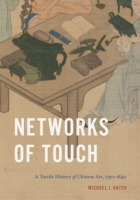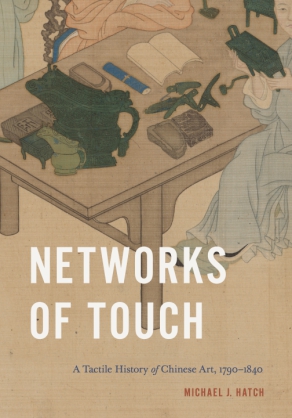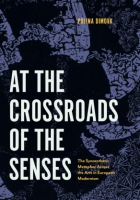Networks of Touch
A Tactile History of Chinese Art, 1790–1840
Michael J. Hatch
“Lucidly written and ambitiously conceived, Networks of Touch is the first English monograph that provides a systematic and critical treatment of many major yet understudied artists in nineteenth-century China. Hatch successfully brings life to the lived experience of individual figures and the embodied experience of their artworks.”
- Description
- Reviews
- Bio
- Table of Contents
- Sample Chapters
- Subjects
In this book, Michael J. Hatch examines the artistic network of Ruan Yuan (1764–1849), a scholar-official whose patronage supported a generation of artists and learned people who prioritized epigraphic research as a means of truing the warped contours of Confucian heritage. Their work instigated an “epigraphic aesthetic”—an appropriation of the stylistic, material, and tactile features of ancient inscribed objects and their reproductive technologies—in late eighteenth- and early nineteenth-century artwork. Rubbings, a reduplicative technology, challenged the dominance of brushwork as the bearer of artistic authority. While brushwork represented the artist’s physical presence through ink and paper, rubbings were direct facsimiles of tactile experiences with objects. This shift empowered artists and scholars to transcend traditional conventions and explore new mediums, uniting previously separate image-making practices while engaging audiences through the senses.
Centering on touch and presenting a fresh perspective on early nineteenth-century literati art in China, this volume sheds light on a period often dismissed as lacking innovation and calls into question optical realism’s perceived supremacy in reshaping the sensory experience of the modern Chinese viewer.
“Lucidly written and ambitiously conceived, Networks of Touch is the first English monograph that provides a systematic and critical treatment of many major yet understudied artists in nineteenth-century China. Hatch successfully brings life to the lived experience of individual figures and the embodied experience of their artworks.”
“Thoroughly researched, smartly conceived, and artfully presented, Networks of Touch is one of those rare books that would satisfy both the specialist scholar and the general reader. With his intellectual ambition, formal visual analysis skills, and fine eye for details, Hatch has enlivened both the forest and the trees down to the textures of the bark and leaf.”
“Networks of Touch deftly offers a corrective to the dismissal of literati art of the early nineteenth century as merely a hidebound continuation of early Qing painting orthodoxy; rather, Hatch convincingly argues that early nineteenth-century artists were engaging in a studied ‘antagonism to the canon’ that situates them in continuity with the later challenges mounted by the artists in mid- and late-nineteenth-century Shanghai.”
Michael J. Hatch is Associate Professor of Fine Arts at Trinity College.
Contents
List of Illustrations
Acknowledgments
Introduction
1 Calligraphy’s New Past
2 Obliterated Texts
3 Epigraphic Painting
4 Tactile Images
5 A Tactful Literatus
6 The Limits of Touch
Epilogue: Modern Horizons
Glossary of Names
Glossary of Foreign Terms
Notes
Bibliography
Index
Download a PDF sample chapter here: Introduction
Also of Interest
Mailing List
Subscribe to our mailing list and be notified about new titles, journals and catalogs.





